Abergavenny- Brynmawr- Pontypool- Newport (35 miles)
The Telegraph newspaper ranks the NCR46 within the top ten best cycle rides in Britain. This is a truly fabulous ride with spectacular views of the Clydach Gorge (an area of outstanding natural beauty), the Brecon Beacons, the Sugar Loaf and Skirrid Mountains. Dropping down at speed into Pontypool then towards home along the familiar Monmouthshire & Brecon canal to Newport.
1st leg on NCR 46, Abergavenny to Brynmawr (11 miles)
We wanted to go early in the morning and planned to catch the nine o’clock train to Abergavenny, but I was late getting to the station. I bought the tickets and rushed across the overhead gantry to platform 4, just as we stepped out onto the platform; our train arrived. We put the bikes on and settled down in the seats by the doors, just as the doors locked an irate woman tried to get on, banging the window, my mate had the cheek to gesture to the woman, ‘you should’ve got here earlier, there’s another one in half an hour’.
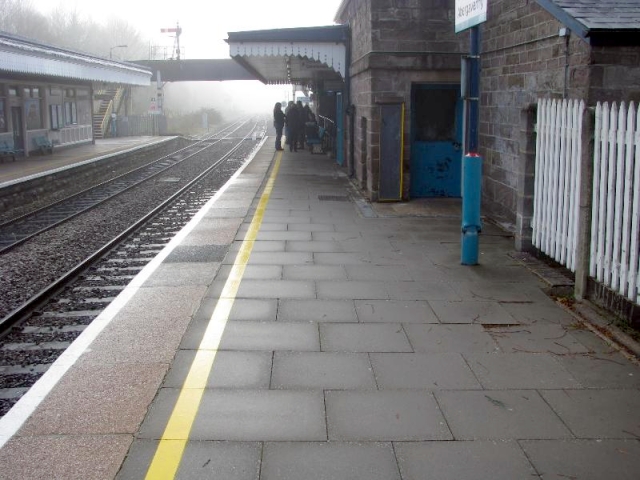 After half an hour, we alighted from the train onto a quaint old station in Abergavenny. It was quite
warm for October, but there was a low mist maintaining a winter chill (cold enough to put the coats
on), the weather forcast said the fog was supposed to lift around 10 am. The first leg of the
journey was along the Usk river bank, through a herd of cows and some bulls. I had my fluorescent
coat on which previously caused a perilous episode with a bull, on this occasion there was no problem. Even though
the route was across a field, there was some kind of concrete mesh under the grass making it easy to ride.
We crossed the river Usk and rode alongside ‘Waitrose’ and under the A465. Almost immediately there was
evidence of an old railway bridge with an abutment on ‘the cuttings’ road. Opposite was a strange sight;
a car parked in a hedge- the car was inside a hedge, obviously it was parked there and the hedge grew
around it, but it did look funny.
After half an hour, we alighted from the train onto a quaint old station in Abergavenny. It was quite
warm for October, but there was a low mist maintaining a winter chill (cold enough to put the coats
on), the weather forcast said the fog was supposed to lift around 10 am. The first leg of the
journey was along the Usk river bank, through a herd of cows and some bulls. I had my fluorescent
coat on which previously caused a perilous episode with a bull, on this occasion there was no problem. Even though
the route was across a field, there was some kind of concrete mesh under the grass making it easy to ride.
We crossed the river Usk and rode alongside ‘Waitrose’ and under the A465. Almost immediately there was
evidence of an old railway bridge with an abutment on ‘the cuttings’ road. Opposite was a strange sight;
a car parked in a hedge- the car was inside a hedge, obviously it was parked there and the hedge grew
around it, but it did look funny.
Within 10 minutes from the train station we were on the NCR 46, heading away from Llanfoist. Straight away the tarmac route is ascending, I was going to use the word ‘climbing’, but this is a gentle ascent. We are on the former Merthyr, Tredegar and Abergavenny Railway which closed in January 1958. Soon we crossed the Monmouthshire and Brecon canal, and then through our first station; Govilon, all that’s left is a name on a house. As we continued going up the side of the valley, the mist still hadn’t lifted, and we could hear the heads of valleys road, but we couldn’t see it. The next station is Gilwern; a double platform station with stairs still intact going to the one platform. The route now leaves the trackbed and goes onto road for about two miles, but you can still see the railway line rising to the left.
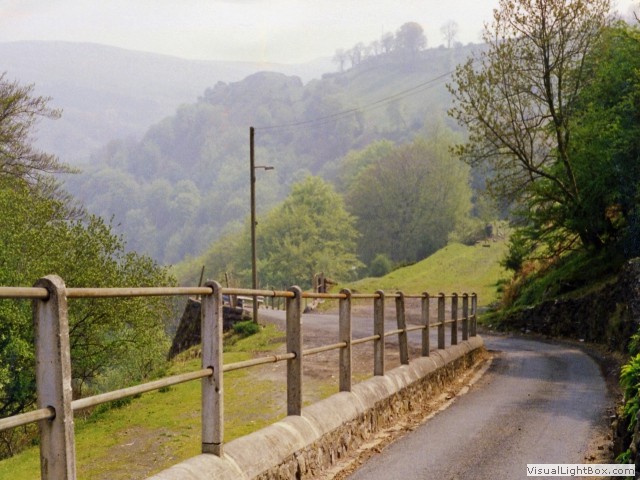 There are no cars around as we begin climbing the steepest bit so far, after two ‘U’ bends, we’re
back on the route of the railway now made into a road. The picturesque trail travels high above the
Clydach Gorge. At ‘Clydach’ we crossed a viaduct and to the left of us are the remains of Clydach
station. The line goes straight through a double tunnel, now bricked off, but our path veers off to
the right. Once around the hill the two previous tunnels emerge from the hill, the tunnels are
staggered, and both tunnels are fenced off, but inevitably people have broken the barriers enough to squeeze
through and explore. Clydach quarry workings appear on the left, with a lot of derelict buildings
still in view. We now cross a small road and the trail goes back to gravel, but it’s still ridable
as we hug the side of the mountain, two more tunnels appear in front of us, the left is still bricked up,
the right one is open; the Gilli Felen tunnels. Again we go off to the right on an old tram path and
although it would be nice to go through the tunnels, at least this route gives us the chance to look back at
our previous route. The next station is Gilli Felen halt, just a couple of buildings left in a cutting,
beyond this was a rusty tin shed, which is too small for a tool shed, it must be a workmen’s toilet.
There are no cars around as we begin climbing the steepest bit so far, after two ‘U’ bends, we’re
back on the route of the railway now made into a road. The picturesque trail travels high above the
Clydach Gorge. At ‘Clydach’ we crossed a viaduct and to the left of us are the remains of Clydach
station. The line goes straight through a double tunnel, now bricked off, but our path veers off to
the right. Once around the hill the two previous tunnels emerge from the hill, the tunnels are
staggered, and both tunnels are fenced off, but inevitably people have broken the barriers enough to squeeze
through and explore. Clydach quarry workings appear on the left, with a lot of derelict buildings
still in view. We now cross a small road and the trail goes back to gravel, but it’s still ridable
as we hug the side of the mountain, two more tunnels appear in front of us, the left is still bricked up,
the right one is open; the Gilli Felen tunnels. Again we go off to the right on an old tram path and
although it would be nice to go through the tunnels, at least this route gives us the chance to look back at
our previous route. The next station is Gilli Felen halt, just a couple of buildings left in a cutting,
beyond this was a rusty tin shed, which is too small for a tool shed, it must be a workmen’s toilet.
2nd leg on NCR 492- Brynmawr to Pontypool (12 miles)
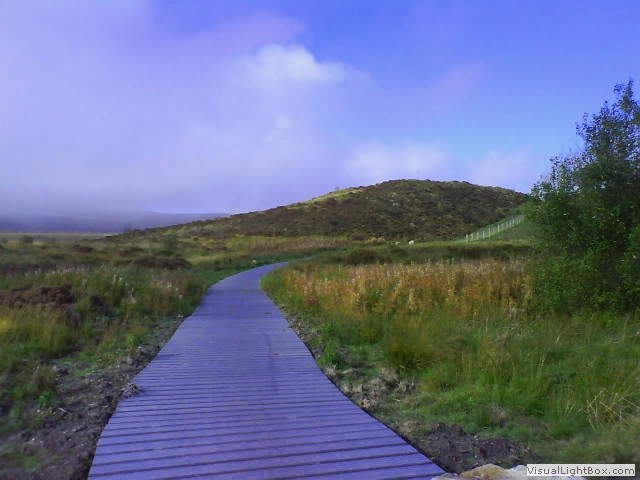 The route is supposed to go all the way to Brynmawr but due to ongoing gas pipe works, it diverts back
onto the roads and climbs steadily, zig-zagging up to the top of Llanelli hill. After crossing the
Blaen-Afon road it continues on another route; the old Brynmawr and Blaenavon railway. From here it’s
downhill all the way to Pontypool, to the right of us lies a cutting where the original track would
have ran, but this is boggy and constantly fills with water, so Sustrans bypassed it with a new path.
Looking into the distance it looks like grass, but on closer inspection; it had plastic
mesh underneath similar to the field in Abergavenny, then we approach some kind of non-slippy decking
boards floating on the mud.
The route is supposed to go all the way to Brynmawr but due to ongoing gas pipe works, it diverts back
onto the roads and climbs steadily, zig-zagging up to the top of Llanelli hill. After crossing the
Blaen-Afon road it continues on another route; the old Brynmawr and Blaenavon railway. From here it’s
downhill all the way to Pontypool, to the right of us lies a cutting where the original track would
have ran, but this is boggy and constantly fills with water, so Sustrans bypassed it with a new path.
Looking into the distance it looks like grass, but on closer inspection; it had plastic
mesh underneath similar to the field in Abergavenny, then we approach some kind of non-slippy decking
boards floating on the mud.
Garn lakes appear below us and finally the mist lifts back up the mountain. We was hoping the Pontypool and Blaenavon heritage railway would be open for tea, but alas today it was closed. Peeping through the station windows we had a bit of a fright, they were obviously getting ready for a Halloween party and there was a fair selection of ghouls, ghosts, witches, and what looked like a Frankenstein. The path follows the railway track now and you could roll all the way to Pontypool without peddaling if you wanted to. The Cwmavon road appears down below us on the other side of the valley. We pass across the Garndiffath viaduct and into a heavy tree lined path. Once at Pontypool it’s a simple matter of crossing under the dual carriageway and into the canal basin at Pontymoile. From here we followed the Monmouthshire & Brecon canal all the way to Newport. Rather than repeat a previous blog, click here to read a prior account of this leg of the journey.
As with all great routes, it’s a juggling act with the weather and seasons, in the warmer summer months there are too many people on the trails, in the winter the weather can be inclement, but at least the trails are empty. I think we judged this one just right.
I’m reluctant to write about a repeat ride, and the main menu would get too complicated including appendix’s to previous rides. However, it’s almost impossible to include everything about that ride on the one page, so here’s an attachment to the original ride, ridden in 2016. Click here to read it.
-
Gallery
 Why not have a look at the gallery relating to this ride. Click the image or the title.
Why not have a look at the gallery relating to this ride. Click the image or the title. -
Rees's Corn Mill memorial water wheel
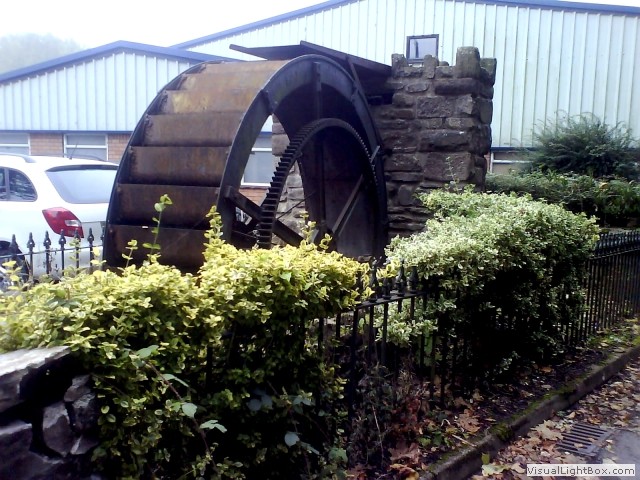 A small water wheel, half embedded in earth, is located near the start of the ride in Mill Street
Industrial Estate. The plaque states the wheel was erected in the late eighties on the site
of Ree’s corn mill.
A small water wheel, half embedded in earth, is located near the start of the ride in Mill Street
Industrial Estate. The plaque states the wheel was erected in the late eighties on the site
of Ree’s corn mill. -
Llanfoist wharf
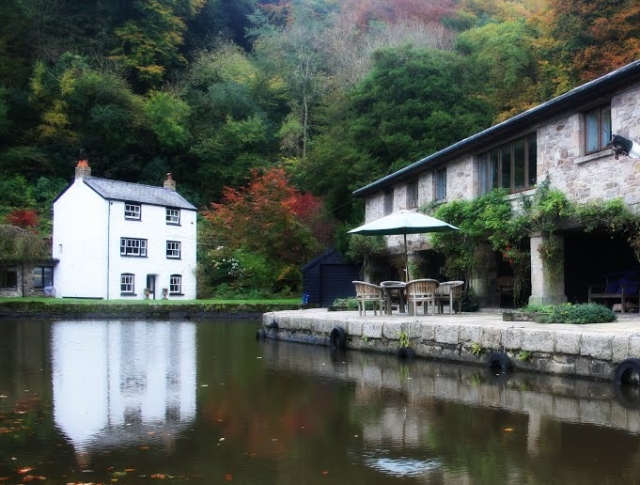 Llanfoist wharf on the Monmouthshire & Brecon Canal lies in a beautiful tranquil spot nestled
amongst acres of woodland on the side of the Blorenge Mountain. Several old tram road paths
lead to the wharf and used to transfer pig iron to the canal to take to Newport.
Llanfoist wharf on the Monmouthshire & Brecon Canal lies in a beautiful tranquil spot nestled
amongst acres of woodland on the side of the Blorenge Mountain. Several old tram road paths
lead to the wharf and used to transfer pig iron to the canal to take to Newport. -
Clydach Gorge
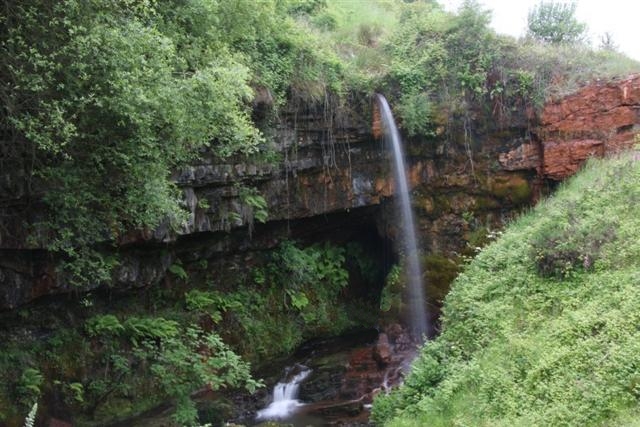 The dramatic landscape and scenery of the Clydach Gorge is supplemented by its diverse
historical and archaeological associations. The gorge is known as Britain's ‘capital of
waterfalls’, it is a wild place, with nature left to itself. Britain's oldest beech wood
clings to the side of the gorge forming the Cwm Clydach nature reserve with vast swathes
of wild garlic leaving a pungent odour in the air.
The dramatic landscape and scenery of the Clydach Gorge is supplemented by its diverse
historical and archaeological associations. The gorge is known as Britain's ‘capital of
waterfalls’, it is a wild place, with nature left to itself. Britain's oldest beech wood
clings to the side of the gorge forming the Cwm Clydach nature reserve with vast swathes
of wild garlic leaving a pungent odour in the air. -
Clydach Limeworks
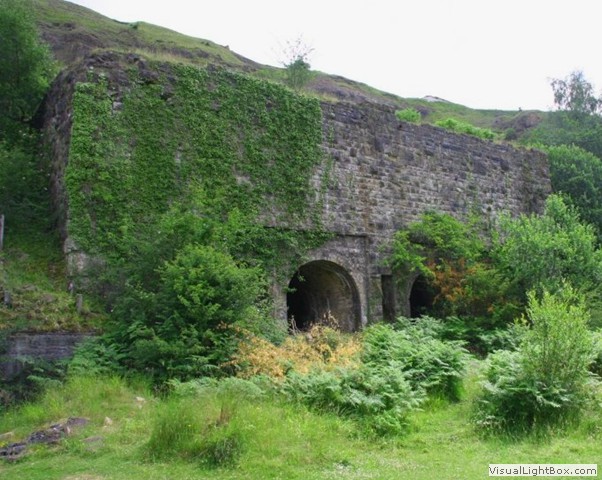 The limekiln and quarries were originally established to provide lime for the construction
of the adjacent railway viaduct and tunnel. The quarry was owned by the Clydach and Abergavenny
Lime and Stone Co.
The limekiln and quarries were originally established to provide lime for the construction
of the adjacent railway viaduct and tunnel. The quarry was owned by the Clydach and Abergavenny
Lime and Stone Co. -
Dunlop Semtex rubber factory
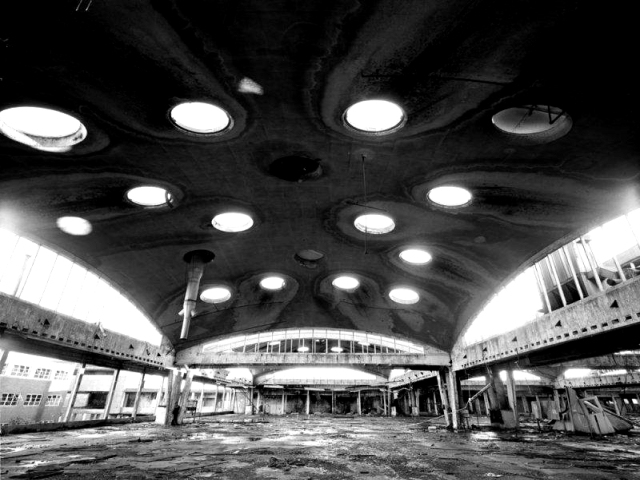 Brymawr’s Dunlop factory domes were described as a masterpiece of the modern age, and are
often credited as the architectural inspiration for the famous Australian opera house. Yet
in 2001 despite opposition and grade II listing, the decaying building's nine unusual
domes were demolished.
Brymawr’s Dunlop factory domes were described as a masterpiece of the modern age, and are
often credited as the architectural inspiration for the famous Australian opera house. Yet
in 2001 despite opposition and grade II listing, the decaying building's nine unusual
domes were demolished. -
Rhymney Brewery
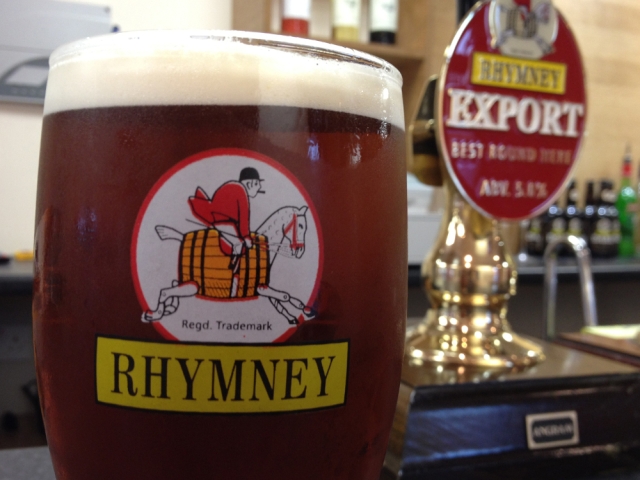 Rhymney was known as the worldwide capital of iron and fuelled the engines of the
industrial revolution, but where men worked; there had to be beer. In the mid nineteenth
century industrial Wales it was far safer to drink beer than to touch the water. Rhymney
Brewery closed in 1978 and was re-launched, and relocated in Blaenavon in 2012.
Rhymney was known as the worldwide capital of iron and fuelled the engines of the
industrial revolution, but where men worked; there had to be beer. In the mid nineteenth
century industrial Wales it was far safer to drink beer than to touch the water. Rhymney
Brewery closed in 1978 and was re-launched, and relocated in Blaenavon in 2012.

 A small water wheel, half embedded in earth, is located near the start of the ride in Mill Street
Industrial Estate. The plaque states the wheel was erected in the late eighties on the site
of Ree’s corn mill.
A small water wheel, half embedded in earth, is located near the start of the ride in Mill Street
Industrial Estate. The plaque states the wheel was erected in the late eighties on the site
of Ree’s corn mill. Llanfoist wharf on the Monmouthshire & Brecon Canal lies in a beautiful tranquil spot nestled
amongst acres of woodland on the side of the Blorenge Mountain. Several old tram road paths
lead to the wharf and used to transfer pig iron to the canal to take to Newport.
Llanfoist wharf on the Monmouthshire & Brecon Canal lies in a beautiful tranquil spot nestled
amongst acres of woodland on the side of the Blorenge Mountain. Several old tram road paths
lead to the wharf and used to transfer pig iron to the canal to take to Newport. The dramatic landscape and scenery of the Clydach Gorge is supplemented by its diverse
historical and archaeological associations. The gorge is known as Britain's ‘capital of
waterfalls’, it is a wild place, with nature left to itself. Britain's oldest beech wood
clings to the side of the gorge forming the Cwm Clydach nature reserve with vast swathes
of wild garlic leaving a pungent odour in the air.
The dramatic landscape and scenery of the Clydach Gorge is supplemented by its diverse
historical and archaeological associations. The gorge is known as Britain's ‘capital of
waterfalls’, it is a wild place, with nature left to itself. Britain's oldest beech wood
clings to the side of the gorge forming the Cwm Clydach nature reserve with vast swathes
of wild garlic leaving a pungent odour in the air. The limekiln and quarries were originally established to provide lime for the construction
of the adjacent railway viaduct and tunnel. The quarry was owned by the Clydach and Abergavenny
Lime and Stone Co.
The limekiln and quarries were originally established to provide lime for the construction
of the adjacent railway viaduct and tunnel. The quarry was owned by the Clydach and Abergavenny
Lime and Stone Co.  Brymawr’s Dunlop factory domes were described as a masterpiece of the modern age, and are
often credited as the architectural inspiration for the famous Australian opera house. Yet
in 2001 despite opposition and grade II listing, the decaying building's nine unusual
domes were demolished.
Brymawr’s Dunlop factory domes were described as a masterpiece of the modern age, and are
often credited as the architectural inspiration for the famous Australian opera house. Yet
in 2001 despite opposition and grade II listing, the decaying building's nine unusual
domes were demolished. Rhymney was known as the worldwide capital of iron and fuelled the engines of the
industrial revolution, but where men worked; there had to be beer. In the mid nineteenth
century industrial Wales it was far safer to drink beer than to touch the water. Rhymney
Brewery closed in 1978 and was re-launched, and relocated in Blaenavon in 2012.
Rhymney was known as the worldwide capital of iron and fuelled the engines of the
industrial revolution, but where men worked; there had to be beer. In the mid nineteenth
century industrial Wales it was far safer to drink beer than to touch the water. Rhymney
Brewery closed in 1978 and was re-launched, and relocated in Blaenavon in 2012.